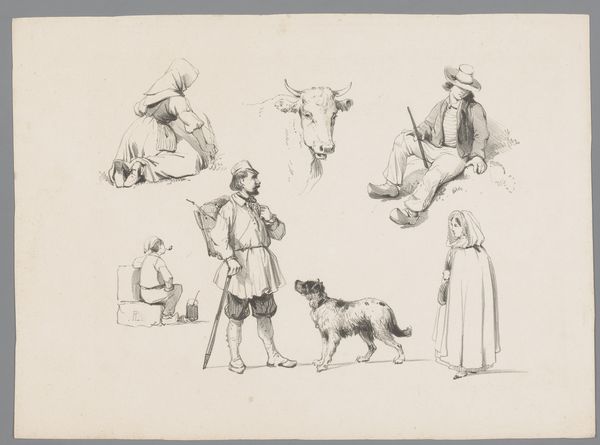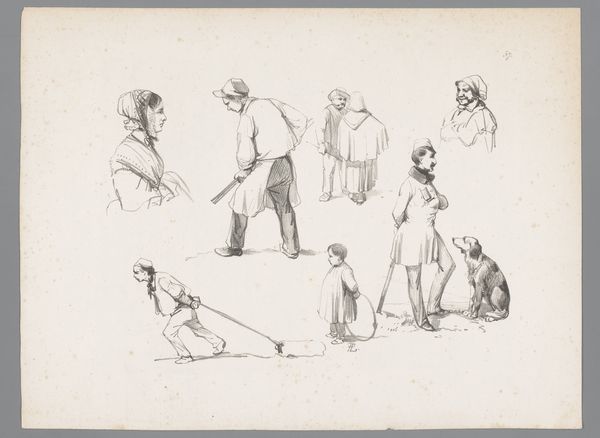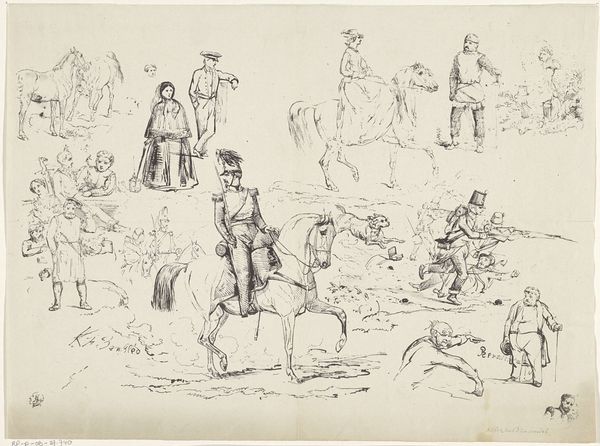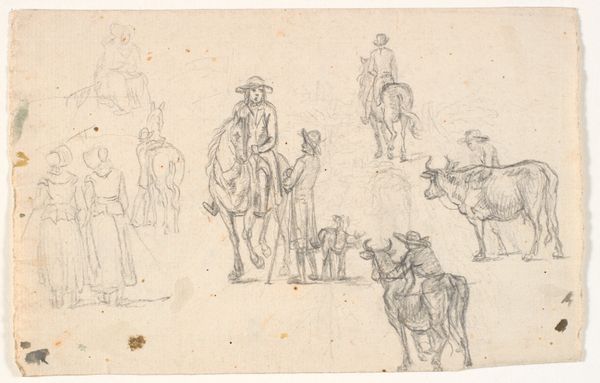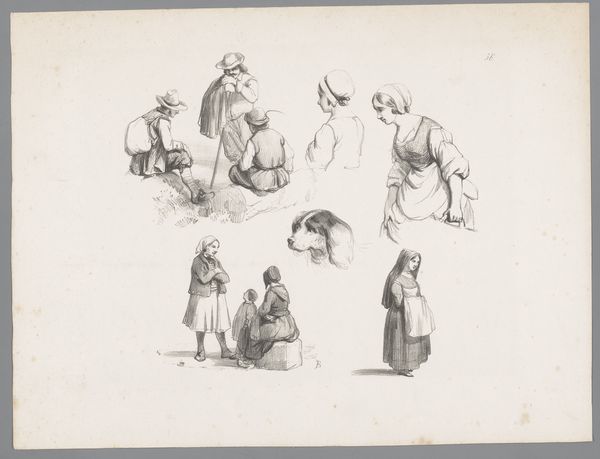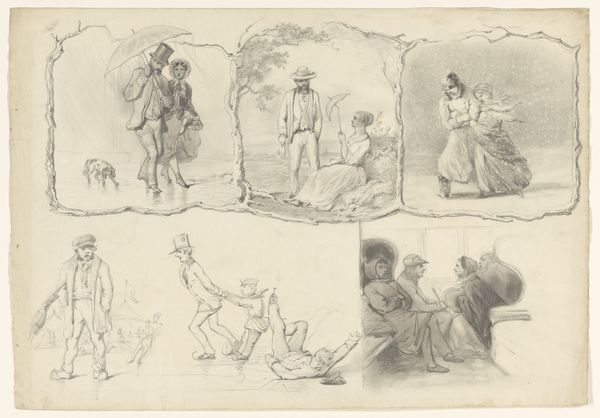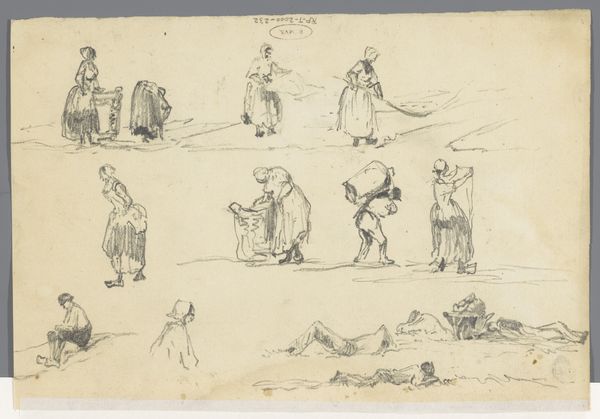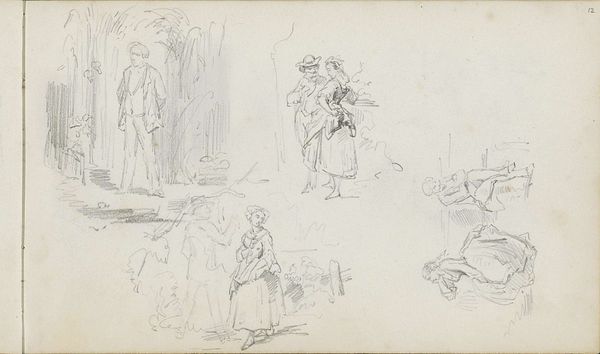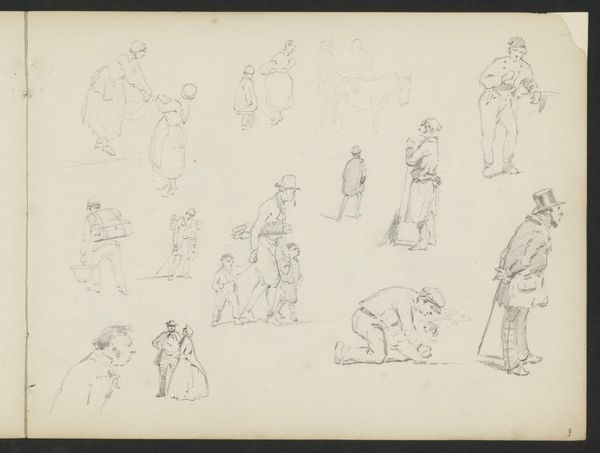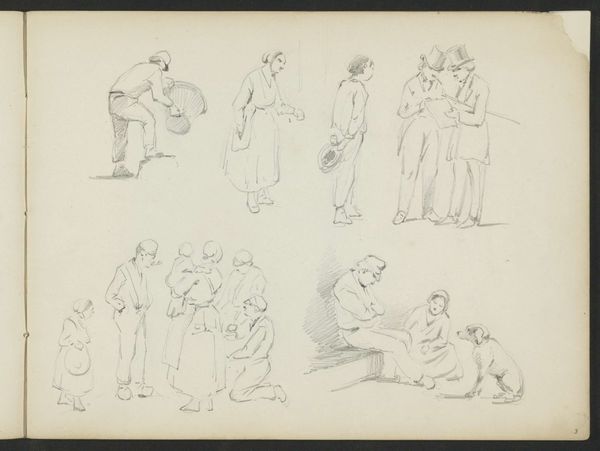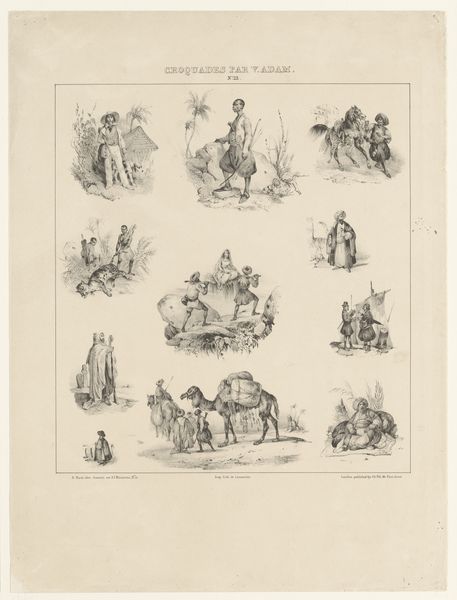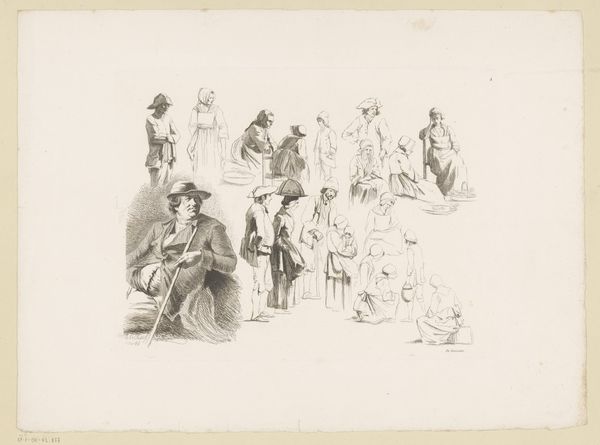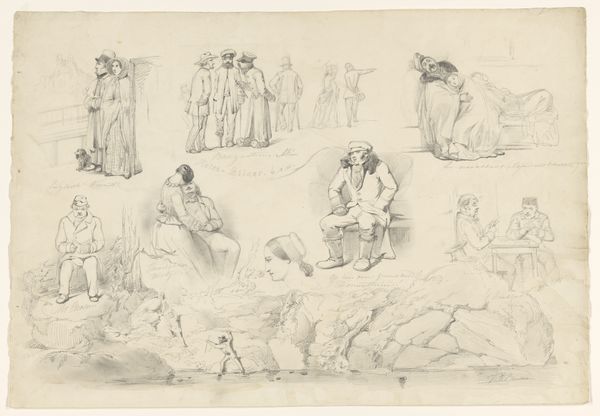
Zes figuurstudies met onder andere twee herders en een ruiter 1816 - 1875
0:00
0:00
drawing, paper, pencil
#
portrait
#
drawing
#
figuration
#
paper
#
romanticism
#
pencil
#
genre-painting
Dimensions: height 242 mm, width 326 mm
Copyright: Rijks Museum: Open Domain
Curator: Here we have Paulus Lauters' "Six Figure Studies with, Among Others, Two Shepherds and a Rider," created sometime between 1816 and 1875. It's currently housed here at the Rijksmuseum. Editor: Well, the immediate thing that strikes me is the atmospheric sketchiness of it. The tonal range is very subtle, mostly light greys achieved with a confident pencil. Curator: Lauters’ use of pencil on paper allows us to see the traces of production. You can almost feel the artist rapidly capturing these figures. The materials themselves, so simple, speak to accessibility. These studies weren't intended for a wealthy patron. They hint at the artist’s labor, of working directly with the social classes who are shown here. Editor: Exactly! Notice how the lightness in the pencil strokes constructs these forms with minimal contrast. See the rider's hat brim and how the shadow defines its curve? These subtle variations in value create space. There’s depth hinted at that invites the eye to wander between the groups. Curator: This is typical Romantic era art; these drawings may have served as preparations for larger works which focused on everyday life. The genre-painting aspect brings in themes associated with that period. They give glimpses into lives, likely unvarnished or idealized in any significant fashion. Editor: What's fascinating is how the placement and scale of these figures within the frame generate meaning. The implied narratives become so compelling with the arrangement he selected. The seated figures along the bottom create this implied horizon. Curator: Agreed. We have the opportunity to delve into these images to find evidence of class dynamics from centuries ago! I find that incredible about his material choices; that humble drawing tools are utilized to document the beginnings of shifts of thinking during times of societal change in culture all around us. Editor: Yes, and as we've observed, Lauters is carefully calibrating each mark in terms of light and shadow. It isn't arbitrary or slapdash! I would even call his romanticism understated in terms of its tonal values; so soft and light instead of dramatic or bold which creates a delicate feeling within this drawing that speaks beautifully to a gentler age where nature had dominion over civilization. Curator: So, we begin by discussing lines on paper and quickly discover within those parameters how economic, social, plus stylistic observations add great meaning overall during Paulus Lauters time. Editor: Exactly, from pure aesthetic observation through detailed, nuanced production we’ve experienced an intricate layering about the piece’s creation.
Comments
No comments
Be the first to comment and join the conversation on the ultimate creative platform.
